Flowers are a beautiful creation of nature that brings happiness and joy to our lives. Some of the most popular flowers name starting with J are Jasmine, Jonquil, and Jack-in-the-Pulpit.
Jasmine is a fragrant flower that is known for its sweet and soothing aroma. It is often used in perfumes and aromatherapy due to its calming effect. Jonquil is a flower that symbolizes rebirth and new beginnings. It is often given as a gift to celebrate the arrival of spring or to wish someone a fresh start.
Jack-in-the-Pulpit, on the other hand, is a unique and intriguing flower that grows in damp and shaded areas. It is known for its striking appearance and unusual shape, which resembles a pulpit with a hood. These are just a few examples of the many beautiful flowers that start with the letter J, each with its own unique qualities and characteristics.
Flowers Name Starting with J
Jacaranda
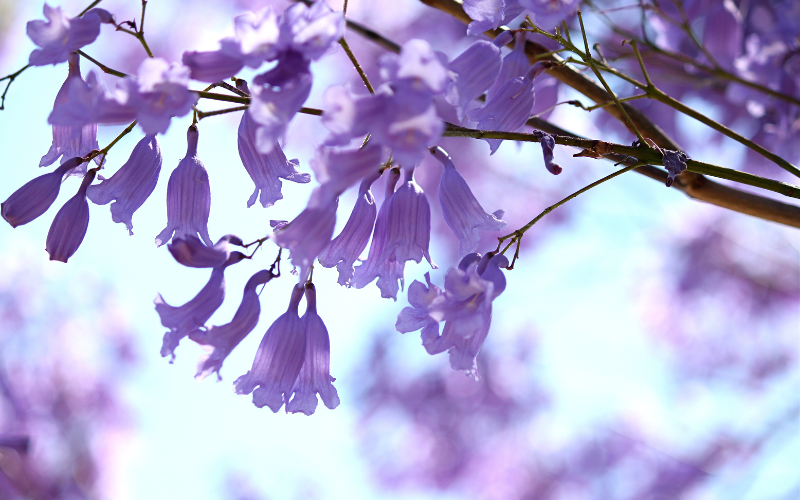
Jacaranda is a beautiful flowering tree that is native to South America but can be found in many parts of the world as an ornamental tree. The tree is well-known for its beautiful blue-purple flowers, which bloom in clusters in the spring and summer.
Its delicate, fern-like foliage creates a beautiful backdrop to the vivid flowers. The Jacaranda can grow up to 60 feet tall with a canopy spread of 30 feet making it a majestic presence in any landscape.
| Scientific Name | Jacaranda mimosifolia |
| Native Range | Argentina, Brazil, Paraguay, and Uruguay. |
| Flowering Season | Spring and summer |
Jack-in-the-Pulpit
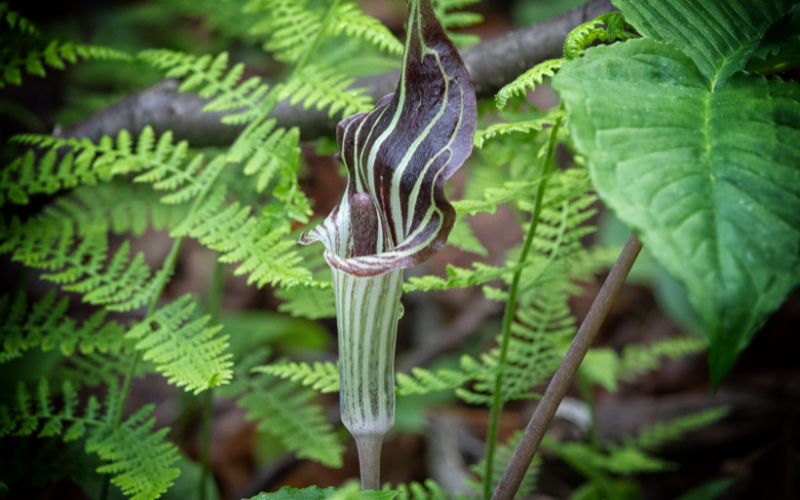
Jack-in-the-Pulpit is a unique and fascinating plant that can be found in North America. It is a member of the Araceae family and is known for its striking appearance. The plant has an unusual shape, with a tall, green stem that is covered in small, dark spots.
Jack-in-the-Pulpit is also known for its medicinal properties and has been used traditionally by Native Americans to treat a variety of ailments, including headaches, fever, and arthritis. It is truly a remarkable plant that is both aesthetically pleasing and useful for its healing properties.
| Scientific Name | Arisaema triphyllum |
| Native Range | North America |
| Flowering Season | Spring |
Jaborosa
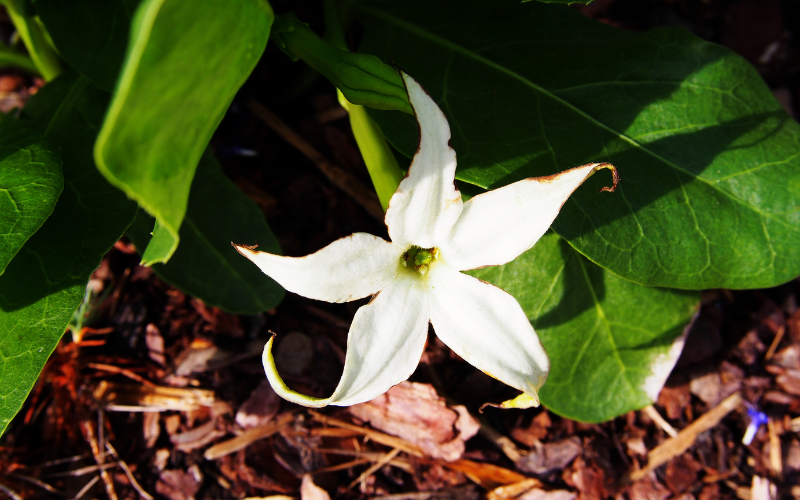
Jaborosa is a genus of plants that is native to South America. These plants are known for their beautiful and unique flowers, which have a trumpet-like shape and come in a range of colors from white and yellow to purple and blue.
They are also known for their medicinal properties and have been used for centuries by indigenous people to treat a variety of illnesses and conditions. With its stunning flowers and wide range of uses, Jaborosa is a fascinating plant that is sure to capture the attention of anyone who encounters it.
| Scientific Name | Jaborosa integrifolia |
| Native Range | South America |
| Flowering Season | Spring and summer |
Jacob’s Ladder
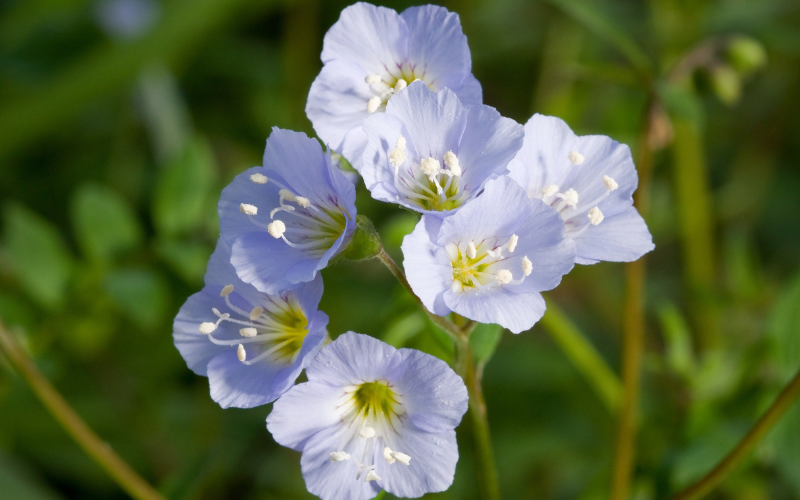
The Jacob’s Ladder flower is a beautiful addition to any garden. This perennial plant is known for its showy clusters of blue, purple, or white flowers that bloom in the spring and summer. The name “Jacob’s Ladder” comes from the arrangement of the leaves on the stem, which appear to form a ladder.
The plant is native to the mountainous regions of Europe but has been introduced to other parts of the world, including North America. The Jacob’s Ladder flower is a low-maintenance plant that prefers partial shade and well-drained soil. It attracts bees and butterflies, making it a great addition to any pollinator garden.
| Scientific Name | Polemonium caeruleum |
| Native Range | Europe,Asia |
| Flowering Season | Late spring to early summer |
Jamesia Americana
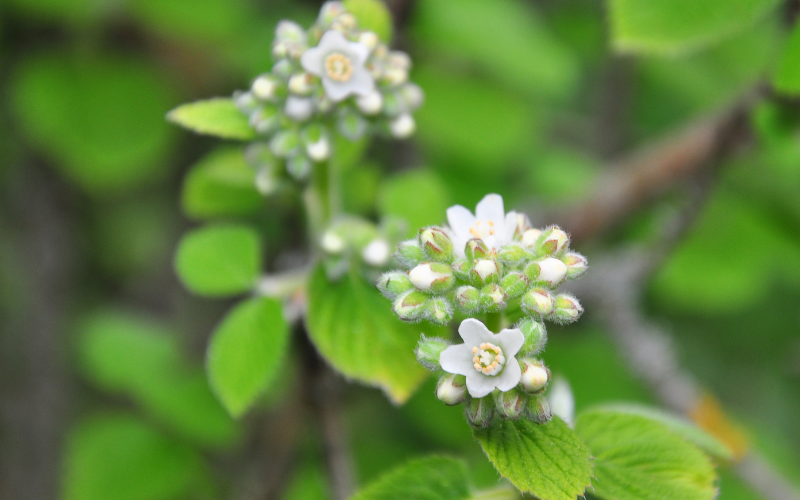
Jamesia Americana is a fascinating plant. It is native to North America. It is a small deciduous plant with beautiful white flowers that bloom in late spring. The plant is also known for its medicinal properties – the bark and roots have traditionally been used by Native Americans to treat a variety of ailments, including sore throats and skin inflammations.
Additionally, the plant is important for local ecosystems, providing habitat and food for a variety of insects and birds. Overall, Jamesia Americana is a unique and valuable plant species that add beauty and diversity to its environment.
| Scientific Name | Jamesia americana |
| Native Range | Western North America |
| Flowering Season | Spring and early summer |
Jade Vine
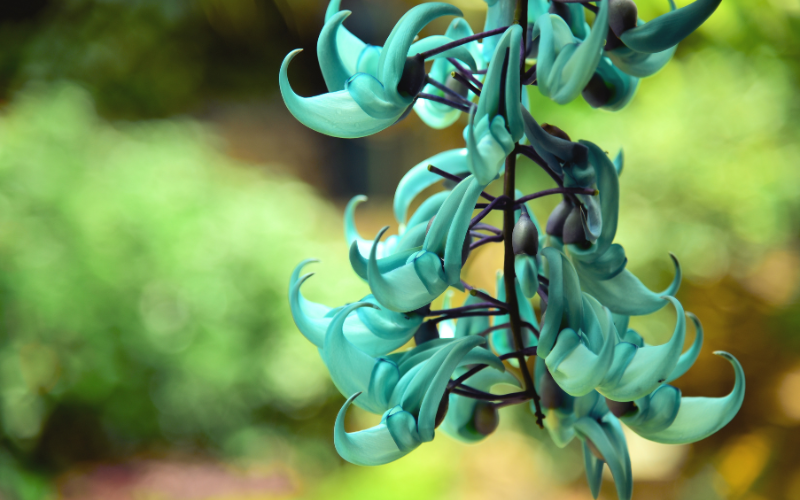
Jade Vine is a rare and exotic plant that is native to the Philippines. It is known for its stunning, turquoise-colored flowers that hang in long, slender clusters, resembling a bunch of grapes.
The Jade Vine flowers are actually made up of hundreds of small blossoms, which give them their distinct waxy appearance. The plant is also known for its impressive size, with vines that can reach up to 18 meters in length. Conservation efforts are currently underway to help protect and restore this amazing plant, allowing future generations to enjoy its beauty for years to come.
| Scientific Name | Strongylodon macrobotrys |
| Native Range | Philippines |
| Flowering Season | Spring and summer months |
Japanese Cobra Lily
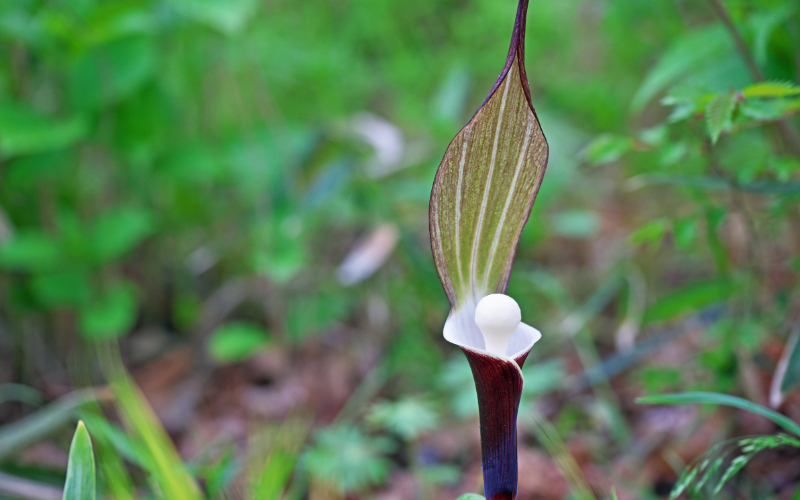
The Japanese Cobra Lily is a fascinating plant that grows in the forests of Japan. It is also known as the Arisaema ringens. What makes it so unique is its striking appearance, with a purple-brown spathe that looks like the hood of a cobra snake, hence its name.
The plant grows to be about 18 inches tall and produces a single leaf, which is shaped like an umbrella. The Japanese Cobra Lily flowers in the late spring or early summer and produces a small, ball-shaped fruit that contains several seeds.
| Scientific Name | Arisaema ringens |
| Native Range | Japan |
| Flowering Season | Late spring and early summer |
Japanese Kerria
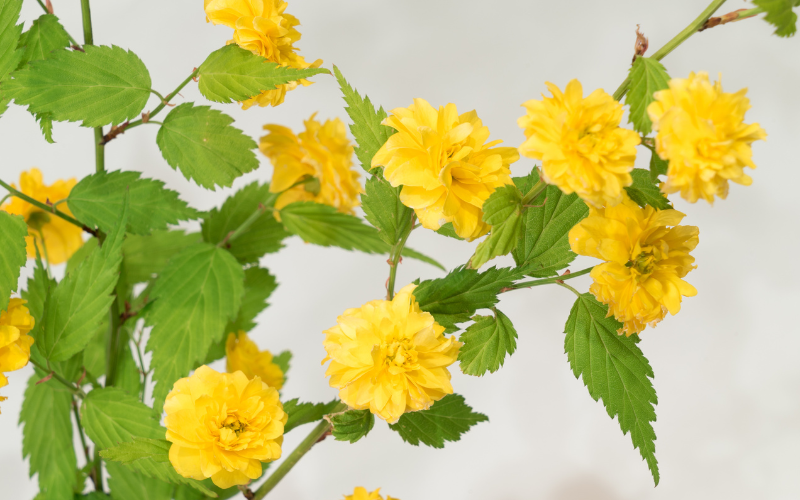
Japanese Kerria is a beautiful ornamental plant that is native to Japan. It is well-known for its bright yellow flowers, which appear in the spring and summer. These flowers are often used in floral arrangements due to their vibrant color and unique shape.
The plant itself is quite hardy and can grow in a variety of soil types, making it a popular choice for many gardeners. Japanese Kerria is also very easy to care for, requiring only occasional pruning to keep it in shape. In addition to its beauty, Japanese Kerria is also known for its medicinal properties.
| Scientific Name | Kerria japonica |
| Native Range | Eastern Asia, specifically Japan and China |
| Flowering Season | Spring |
Japanese Lantern
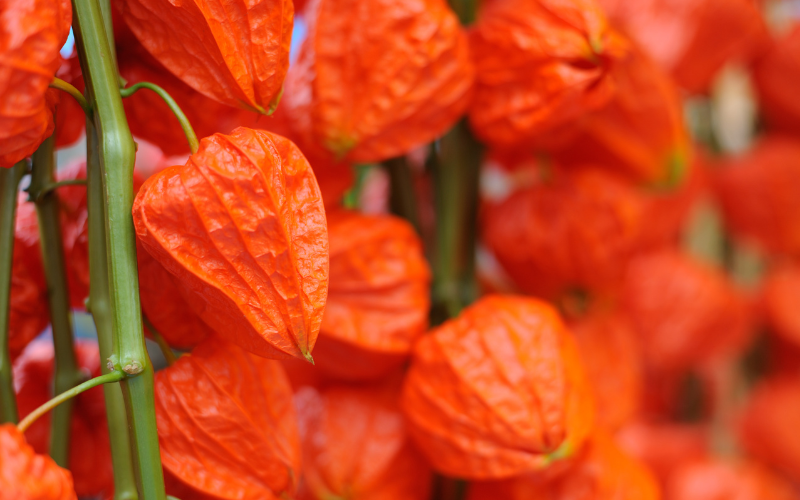
Japanese Lantern flowers are a beautiful addition to any garden. These orange or red lantern-like flowers are native to Asia and Europe and have a distinct look that makes them stand out from other flowers.
They bloom in the summer and fall months, making them the perfect choice for those who want a splash of color in their garden throughout the year. Not only are they beautiful, but they are also easy to grow. They prefer partial shade and well-drained soil, but can also tolerate full sun and dry soil.
| Scientific Name | Physalis alkekengi |
| Native Range | Asia |
| Flowering Season | Late summer or early autumn |
Jerusalem Sage
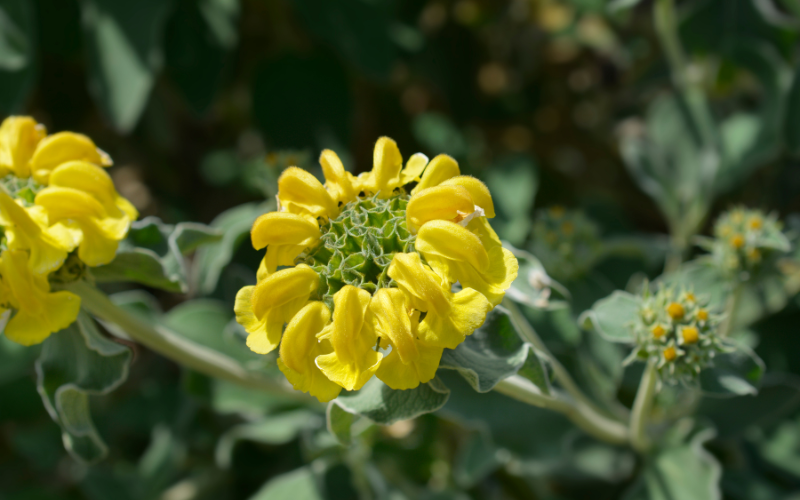
Jerusalem Sage, also known as Phlomis fruticosa, is a unique and beautiful plant that has both visual and medical properties. In the garden, its silvery green leaves and yellow flowers add a beautiful contrast to other plants.
This plant is also drought-resistant and easy to care for, making it a great addition to any garden. However, Jerusalem Sage is not just a pretty plant. Its medicinal properties have been utilized for centuries. It is said to have anti-inflammatory properties and to be helpful in treating ailments such as sore throats, coughs, and even digestive issues.
| Scientific Name | Phlomis fruticosa |
| Native Range | Israel, Greece, Turkey, and Cyprus |
| Flowering Season | Late spring to early summer |
Jamesia Americana (Waxflower)
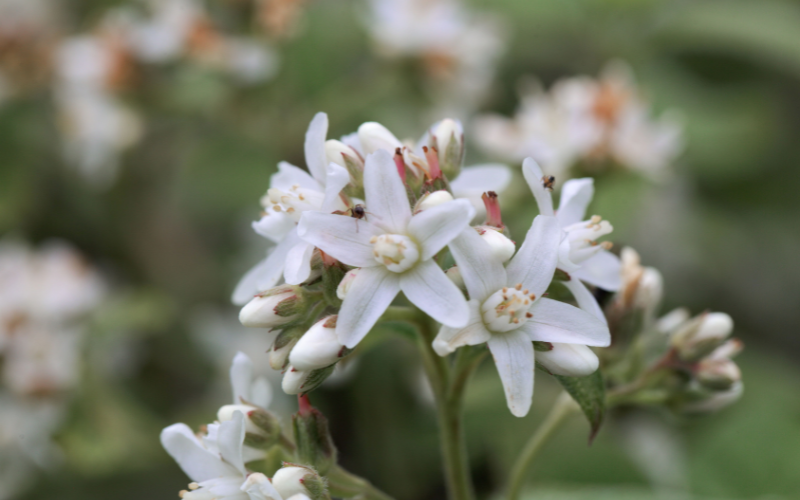
The Jamesia Americana is a stunningly beautiful and unique flower. It is commonly known as the Waxflower. The flowers of Jamesia americana are small, white, and have a delicate and intricate structure.
The Waxflower typically blooms in late spring to early summer, usually from May to June. The Waxflower showcases clusters of small, star-shaped flowers that bloom in varying shades of white and pale pink, exuding an enchanting charm.
| Scientific Name | Jamesia americana |
| Native Range | Western North America, in the U.S. states of Arizona, California, Colorado, Nevada, New Mexico, Utah, and Wyoming |
| Flowering Season | Late spring to early summer |
Japanese Anemone

The Japanese Anemone flower is a stunning flowering plant that originates from East Asia. It is also known as Anemone hupehensis. Japanese Anemones typically bloom in late summer or early autumn.
They typically reach a height of 2 to 4 feet (60 to 120 centimeters) and have upright stems with multiple flowers on each stalk. The Japanese Anemone is also known for attracting pollinators such as bees and butterflies.
| Scientific Name | Anemone hupehensis |
| Native Range | Western and Central China |
| Flowering Season | Midsummer |
Japanese Iris
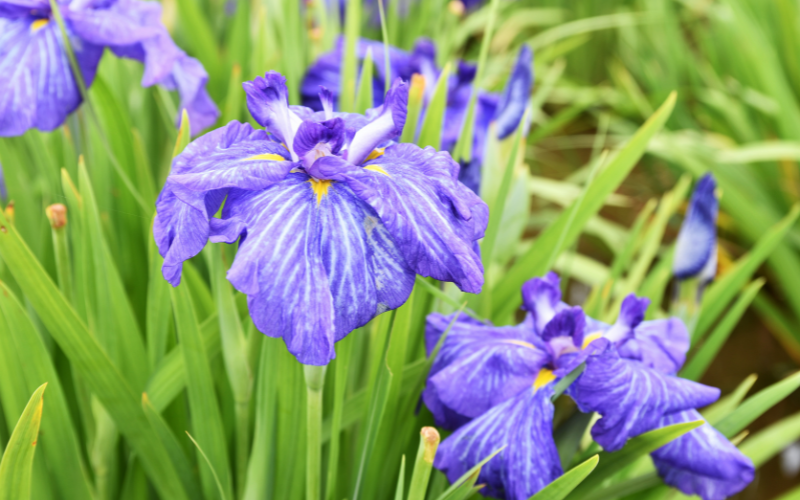
The Japanese Iris is a stunning flowering plant native to Japan. The Japanese Iris, scientifically known as Iris ensata. Japanese Iris typically blooms in late spring to early summer, usually from May to June.
Japanese Iris flowers come in a wide range of colors, including shades of purple, blue, pink, white, and yellow. Japanese Iris is popularly grown in water gardens, boggy areas, or moist borders. Japanese Iris flowers attract pollinators such as bees and butterflies with their nectar-rich blooms.
| Scientific Name | Iris ensata |
| Native Range | Siberia to Japan |
| Flowering Season | Early to mid-summer |
Japanese Pachysandra
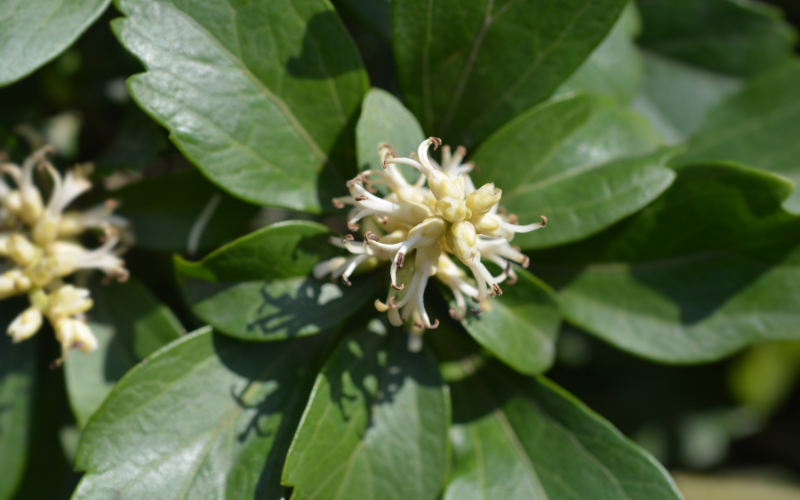
Japanese Pachysandra, also known as Pachysandra terminalis, is a stunning flowering plant. Pachysandra is valued for its dense, evergreen foliage that forms a low carpet-like cover in shaded areas. Pachysandra has leathery, glossy, dark green leaves that are scalloped at the margins.
Pachysandra flowers in the late spring to early summer, typically around April to May. The Japanese Pachysandra thrives in shaded areas, making it an ideal choice for under trees or in areas with limited sunlight.
| Scientific Name | Pachysandra terminalis |
| Native Range | Japan and China |
| Flowering Season | Spring |
Jasione
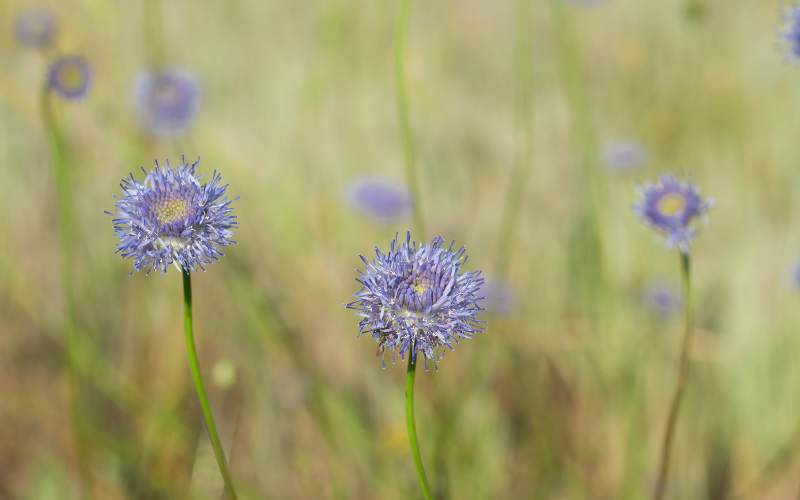
Jasione, commonly known as sheep’s-bit or sheep’s-bit scabious, is a genus of flowering plants in the family Campanulaceae. It is native to Europe and parts of Asia. Jasione flowers are small, typically ranging from blue to purple in color. They have a bell-shaped or tubular structure, with petals fused together to form a tube-like corolla. Generally, they bloom during the summer months. This hardy plant grows in well-drained soil and requires minimal maintenance
| Scientific Name | Jasione |
| Native Range | Europe to Medit |
| Flowering Season | Spring, Summer |
Jasmine
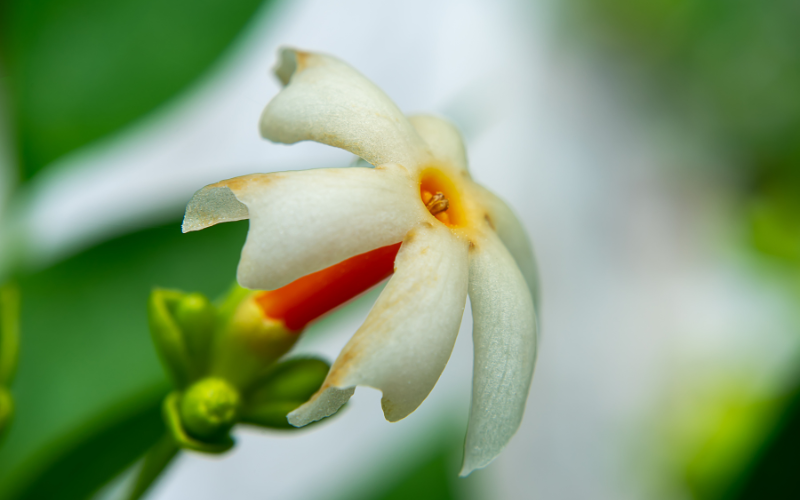
The jasmine flower is known for its captivating fragrance and delicate beauty. Jasmine flowers are typically small, white, or pale yellow. They have a star-like shape with multiple petals and a distinct floral fragrance. Jasmine flowers generally bloom during the summer months.
Jasmine holds cultural and symbolic significance in many cultures. It is associated with love, beauty, purity, and spirituality. The fragrance of jasmine flowers is often described as sweet, intense, and intoxicating.
| Scientific Name | Jasminum |
| Native Range | Eurasia, Africa, Australasia, and Oceania |
| Flowering Season | Summer or winter |
Jerusalem Artichoke
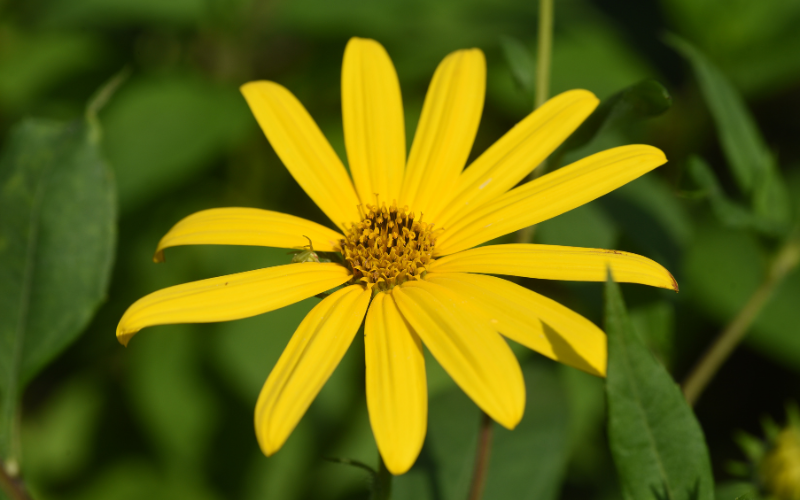
The Jerusalem artichoke flower is a stunning and unique display of nature’s beauty. Jerusalem artichoke flowers are small, typically around 2 to 3 inches (5 to 7.5 cm) in diameter.
The flowers have bright yellow petals and a dark center composed of numerous tiny disk florets. The flowering season of Jerusalem artichoke occurs from late summer to early fall. It belongs to the sunflower family and is native to North America.
| Scientific Name | Helianthus tuberosus |
| Native Range | North and South America, Europe, Asia, and Australia |
| Flowering Season | Summer, early fall |
Jewel Orchid
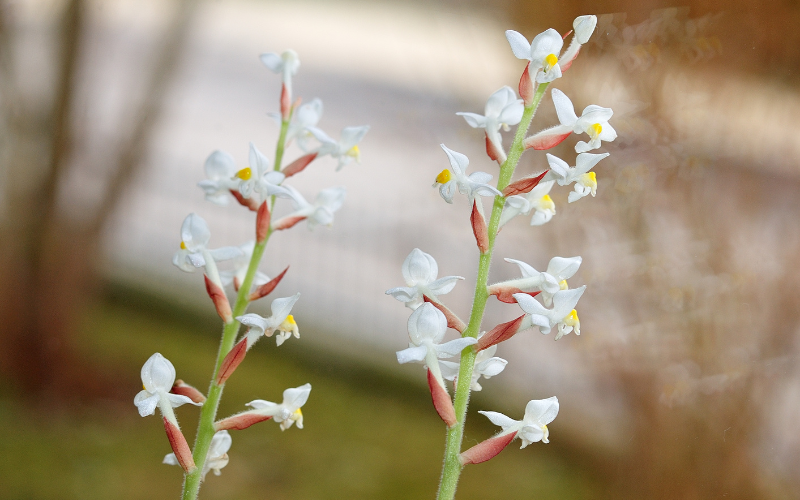
The Jewel Orchid is a beautiful flower. Jewel Orchid flowers are often relatively small compared to the striking foliage. This exceptional flower is native to the tropical regions of Southeast Asia.
The blooming season of Jewel Orchids can vary depending on the specific species or hybrid. Some species may produce flowers in the spring or summer, while others may bloom at different times throughout the year.
| Scientific Name | Ludisia |
| Native Range | Indonesia, the Philippines, Myanmar, and India |
| Flowering Season | Winter |
Joe Pye Weed
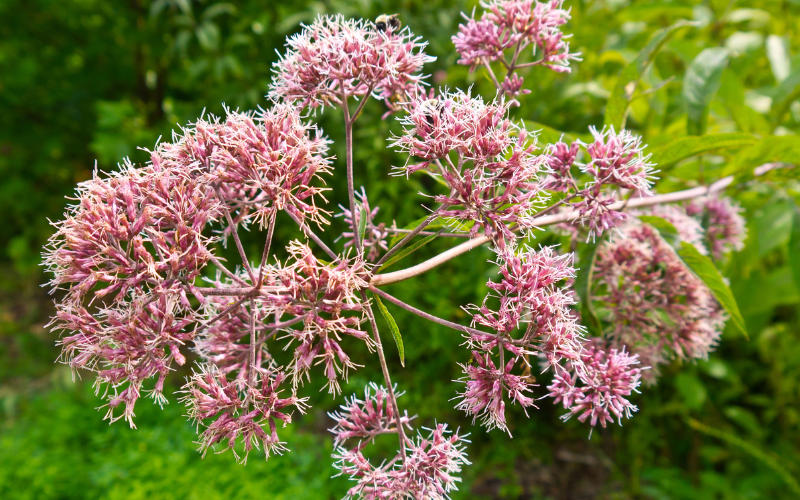
Joe Pye Weed is a stunning flowering plant that is native to North America. It is also known as Eutrochium purpureum. Joe Pye Weed typically blooms from mid to late summer.
Joe Pye Weed can grow quite tall, ranging from 4 to 7 feet (1.2 to 2.1 meters) or even taller. The florets have a tubular shape and are typically pink to purplish in color. The flowers have a fluffy appearance and attract pollinators with their nectar-rich blooms.
| Scientific Name | Eutrochium purpureum |
| Native Range | Eastern North America |
| Flowering Season | Late summer into fall |
Johnny Jump Ups

Johnny Jump Ups, scientifically known as Viola tricolor, are small, charming flowers that belong to the Violaceae family. Johnny Jump Ups have distinctive, delicate flowers that are typically about 1 inch (2.5 centimeters) in diameter.
The flowers have five petals with a combination of colors, including purple, yellow, and white. Johnny Jump Ups usually bloom in spring and early summer. They have low-growing, spreading habits and produce clusters of flowers on thin, wiry stems.
| Scientific Name | Viola tricolor |
| Native Range | Western Europe, Central Europe, and parts of Asia |
| Flowering Season | Spring, fall |
Japanese Toad Lily
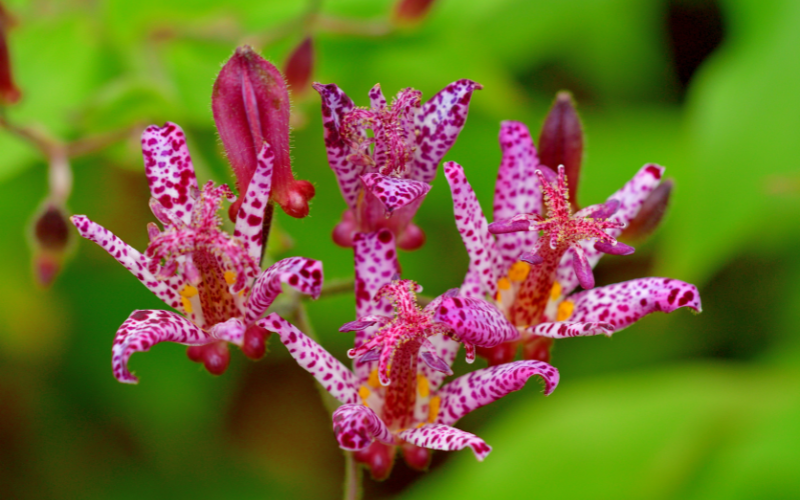
Japanese Toad Lily, or Tricyrtis hirta, is a mesmerizing flower of the Melanthiaceae family. Native to Japan these occur in a variety of colors such as purple, pink, white, and yellow. They bloom from late summer to early fall, reach a height of 1 to 2 feet, and prefer well-drained soil.
The Japanese Toad Lily has a unique look. Its orchid-like blossoms have spots with lovely patterns that resemble toad skin. The foliage of the plant is made up of lance-shaped, dark green leaves that make a beautiful backdrop for the delightful blossoms.
| Scientific Name | Tricyrtis hirta |
| Native Range | Japan |
| Flowering Season | Late summer |
Japanese Barberry
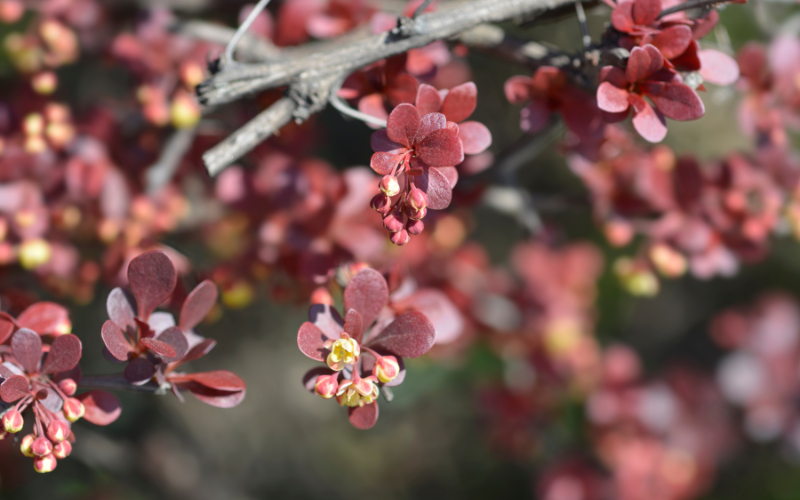
Japanese Barberry, or Berberis thunbergii, is a fascinating plant in the Berberidaceae family. Native to Japan it comes in green, red, and purple hues. It blooms from late spring to early summer, with little yellow flowers that turn into gorgeous red berries.
Grows up to 6 ft. tall and thrives in well-drained soil. Japanese Barberry has spiky, evergreen foliage that serves as a barrier to wildlife and adds an extra layer of security to gardens. The dense leaves provide an impassable barrier, making it ideal for creating boundaries.
| Scientific Name | Berberis thunbergii |
| Native Range | Japan |
| Flowering Season | Spring |
Jewelweed
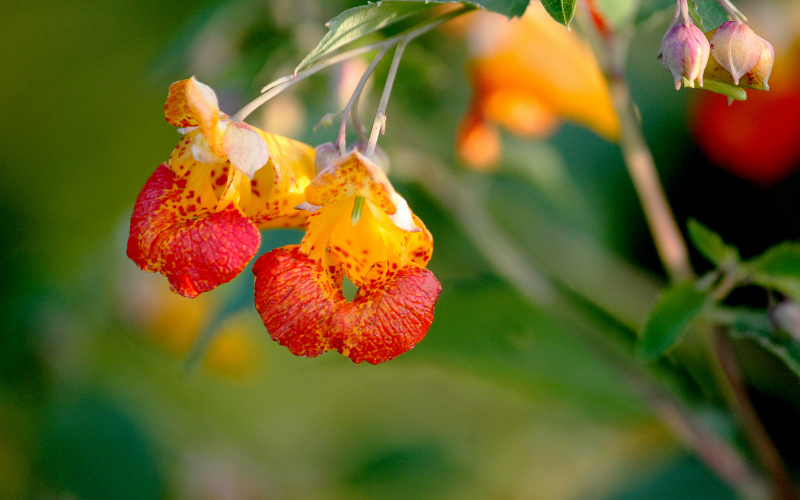
Jewelweed, or Impatiens capensis, is a beautiful plant in the Balsaminaceae family. Its flowers, which are native to North America, are orange, yellow, and occasionally crimson, and resemble little diamonds shining in the sunlight. Blooms from late spring to early fall, thrive in wet soil and can reach a height of 5 feet.
Jewelweed features long, tubular flowers that fall from thin stalks and delicate, succulent-like leaves with sharp edges. Jewelweed is very unique in nature’s palette due to its stunning hues and unique blossoms.
| Scientific Name | Impatiens capensis |
| Native Range | Northern and Eastern North America |
| Flowering Season | Mid Summer |
Joseph’s Coat
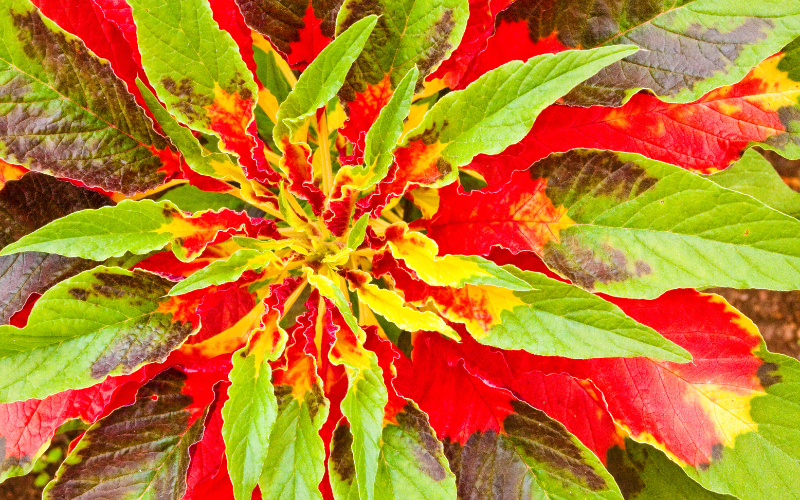
Joseph’s Coat, or Amaranthus tricolor, is a gorgeous plant of the Amaranthaceae family. Native to South America these have an amazing display of red, yellow, orange, and green. These thrive on well-drained soil and can grow up to 3 ft. tall during the summer months.
Its dense appearance is due to its small size and bushy nature, making it a popular choice for borders or container gardening. Joseph’s Coat is a spectacular plant that fully embodies the phrase “a feast for the eyes” with its vibrant colors and unique foliage.
| Scientific Name | Amaranthus tricolor |
| Native Range | Mexico and Brazil |
| Flowering Season | Late Fall or Winter |
Jacob’s Ladder

Jacob’s Ladder plant or Polemonium caeruleum, is a beautiful perennial in the Polemoniaceae family. Native to North America these come in blue, purple, pink, and white. Blooming in late spring to early summer and thrive in well-drained soil, growing up to 2 ft. tall.
Jacob’s Ladder has a unique look due to its fern-like foliage and delicate, bell-shaped flowers that grow in clusters along the stems. Its entire appearance is amazing and unique, making it a treasured addition to any garden.
| Scientific Name | Polemonium reptans |
| Native Range | Missouri |
| Flowering Season | Spring, Summer |
Jumping Cholla
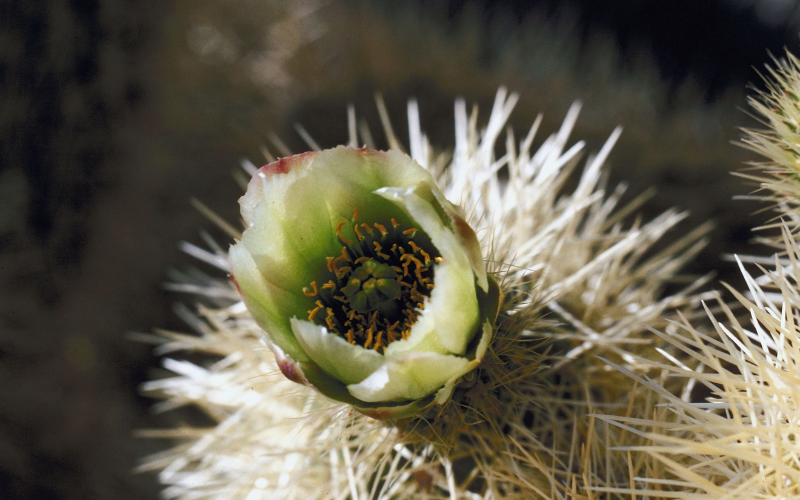
Jumping Cholla cactus, or Teddy Bear Cholla, is an exclusive cactus. Native to the southwestern United States and northern Mexico, its branches range in color from vivid green to deep red. These plants bloom in the spring and early summer and can grow up to 12 ft. tall.
Its branches are coated in sharp spines that break easily when touched and spines can easily stick to clothing, skin, or even animals, making it a fascinating and dangerous plant.
| Scientific Name | Cylindropuntia fulgida |
| Native Range | Sonora and the Southwestern United States |
| Flowering Season | Late Spring to Early Summer |
Justicia
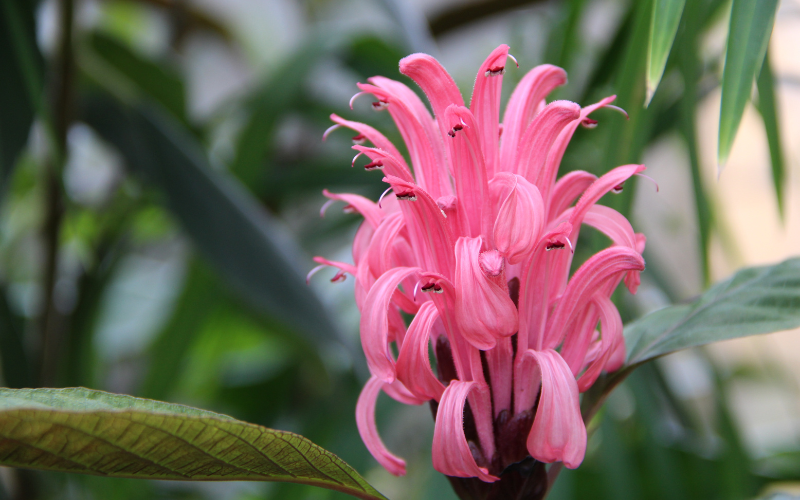
Justicia, or shrimp plant, is an attractive plant in the Acanthaceae family. Native to Mexico and the Caribbean these come in a variety of colors such as red, orange, yellow, and white. Blooms from late spring to early fall prefer well-drained soil and can grow up to 6 ft. tall.
It has thick, glossy foliage and beautiful flower clusters that attract pollinators like butterflies and hummingbirds. Justicia is a wonderful addition to any plant collection because of its capacity to add color, beauty, and animal attractants to any garden.
| Scientific Name | Justicia gendarussa |
| Native Range | Afghanistan, the Indian subcontinent (Bangladesh, India, Pakistan, Nepal, and Sri Lanka), Laos, Myanmar, and Vietnam |
| Flowering Season | Early Spring to Fall |
Jonquil
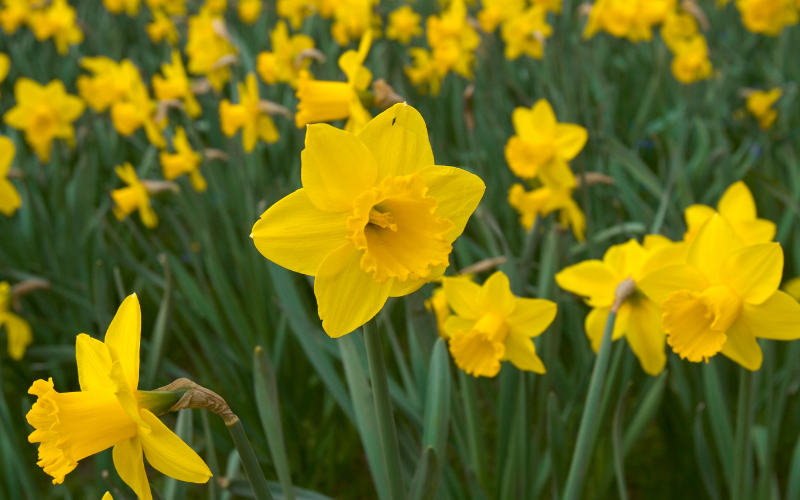
Jonquils, or Narcissus jonquilla, are beautiful flowers in the Amaryllidaceae family. It is a Mediterranean native that comes in a range of colors such as yellow, white, and even pastel pink.
These bloom in the spring and demand well-drained soil, growing up to 18 inches tall. They have slender, grass-like leaves and clusters of fragrant, trumpet-shaped flowers that flow with elegance attracting pollinators.
| Scientific Name | Narcissus |
| Native Range | Spain and Portugal |
| Flowering Season | Late Winter |
Jessamine
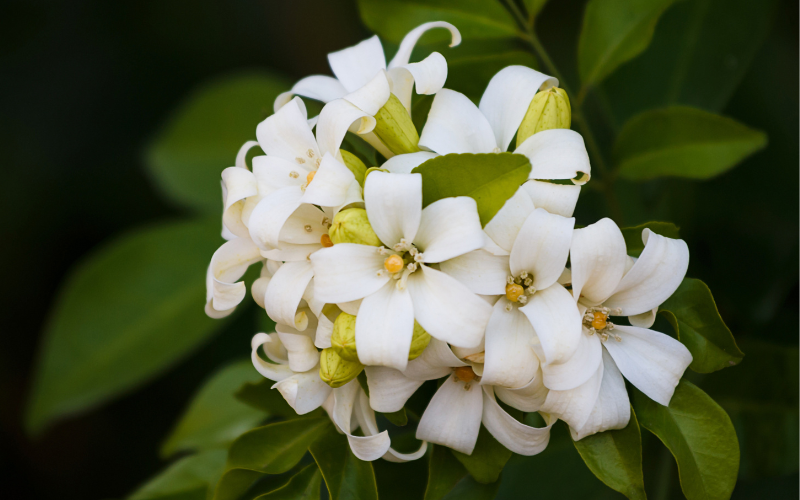
Jessamine, also known as Gelsemium sempervirens, is an eye-catching flower in the Loganiaceae family. Native to North and Central America these occur in a variety of colors, including yellow, white, and orange.
Blooming in late winter or early spring, thrive in well-drained soil and grows up to 20 feet in length. Jessamine can range from tiny shrubs to tall, climbing vines, letting design and placement choices. Its glossy, green foliage and flawless, trumpet-shaped flowers are a pleasure to behold, adding beauty to any garden.
| Scientific Name | Gelsemium sempervirens |
| Native Range | Virginia and Florida west to Arkansas and east Texas and south to Guatemala |
| Flowering Season | Spring to Late Fall |
Jumbie Bean
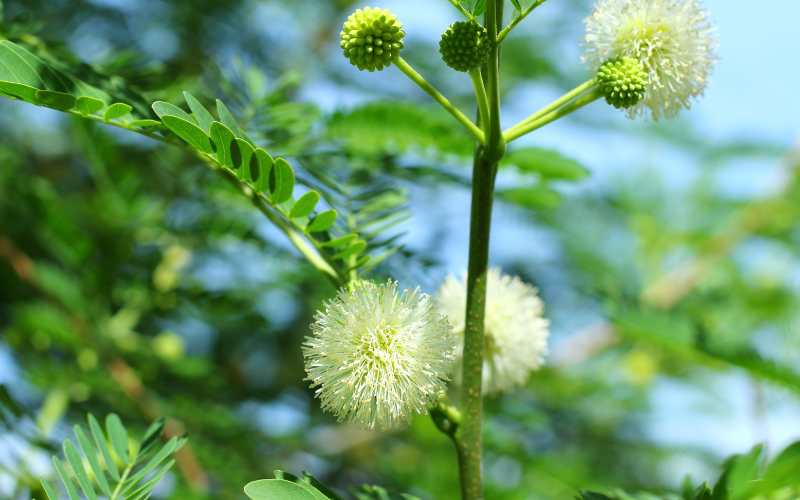
Jumbie Bean, or Leucaena leucocephala, belongs to the legume family. It is a North American native with beautiful clusters of white, pink, or yellow blooms. These thrive in well-drained soil and can grow up to 30 ft. tall, blooming from late spring to early summer.
It has a delicate and graceful appearance due to its slender, elongated leaves. The Jumbie Bean, whether planted as a solo plant or in a mixed garden, is sure to charm with its distinct traits and eye-catching blossoms.
| Scientific Name | Abrus precatorius |
| Native Range | Central America |
| Flowering Season | Throughout the year |
Question & Answer
What is a daffodil-like flower that starts with J?
Daffodils, scientifically known as Narcissus, are a distinct genus of flowers, and there isn’t a closely related flower that begins with “J” resembling them.
What is the cupid flower called?
The Cupid’s Dart (Catananche caerulea) is a flower that is sometimes referred to as the “Cupid Flower.”
Which flower is called as gold?
The Marigold (Tagetes) is sometimes referred to as the “flower of gold” due to its vibrant golden or yellow color.
Which is the smallest flower in the world?
The world’s smallest flower is the Wolffia globosa, commonly known as the watermeal.
Which flower is the rarest in India?
One of the rarest flowers in India is the Neelakurinji (Strobilanthes kunthiana).
